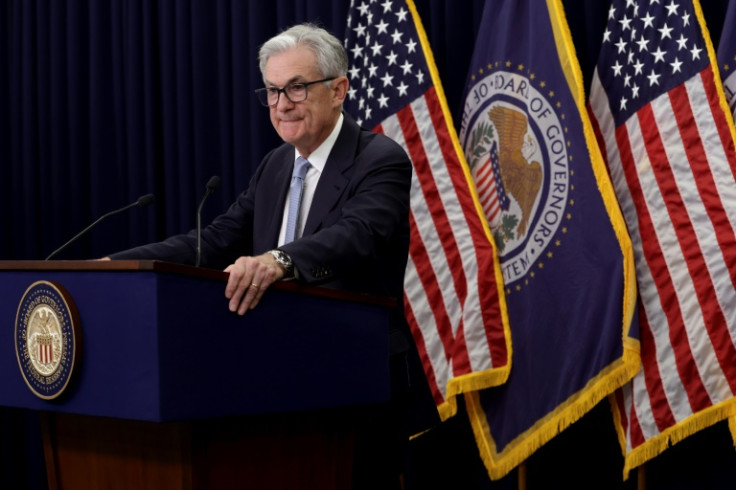Fed Raises Benchmark Borrowing Rate For 10th Time In A Year Despite Growth Concerns
In a widely expected move, the Federal Reserve raised its benchmark borrowing rate by 0.25 percentage point, marking its 10th interest rate increase in just over a year. The Fed's decision takes the Fed funds rate to a target range of 5%-5.25%, the highest since August 2007.
During Wednesday's press conference, Chairman Jerome Powell said, "A decision on a pause was not made today" but added that the change in the statement language around future policy firming was "meaningful," CNN reported. His statement comes amid worries about economic growth and a banking crisis that has shaken up Wall Street.
The central bank's decision takes into account the cumulative effect of prior monetary policy tightening, the lag in its impact on economic activity and inflation, and prevailing economic and financial circumstances. This implies that while a firm policy stance might continue, the direction for concrete interest rate increases remains uncertain as decision-makers track new information and financial conditions.
The Fed has been contending with turbulence in the banking sector, leading to the shutdown of three mid-size banks, although officials maintain the industry's stability overall. Nonetheless, credit restrictions and increased regulations are anticipated to exacerbate the already sluggish 1.1% annualized growth experienced during the first quarter.
Despite the fact that elevated rates have exacerbated the banking issues, officials at the Fed affirm that their attention is solely on controlling inflation. The latest data indicates a moderation in price hikes; however, certain expenses such as housing and medical care have persisted at elevated levels. Investors are expecting that weakened growth and the potential for a recession will push the Fed to lower rates later in the year.
The Institute for Supply Management gauge has reported that manufacturing has been in decline for the last six months. However, there are indications of a brighter picture in other sectors of the economy. The services industry, which represents a more comprehensive portion of the $26.5 trillion U.S. economy, has been showing signs of growth. Moreover, the labor market has proven to be robust and hasn't been severely affected by the manufacturing slump.
As per a CNBC report, ADP, a payroll processing company, stated Wednesday that private sector firms added 296,000 jobs in April, which surpassed economists' projections. This could be interpreted as a warning that despite the Federal Reserve's attempts to address the employment situation and rectify a supply-demand mismatch, underlying problems persist.

© Copyright IBTimes 2024. All rights reserved.





















